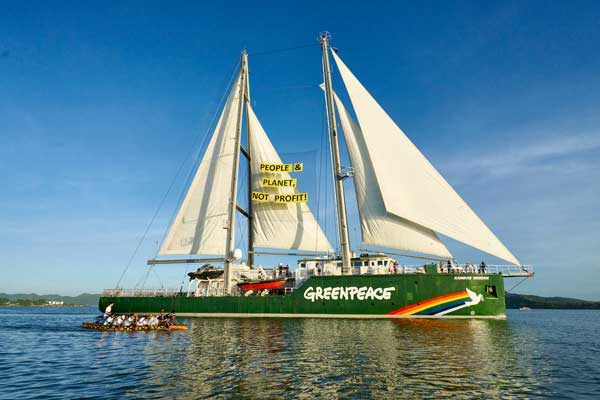“It is coming back to the Philippines for the Ship the Plastic Back tour to campaign against plastic pollution and rally the Filipinos as we move to break free from plastic,” Pago said.
Greenpeace Philippines said the tour was part of a global campaign that targeted companies producing massive amounts of single-use plastic that pollutes the world’s oceans.
The first stop of the iconic ship is the Manila Bay. On March 2 and 3, it will be opened to the public for a chance to see Manila Bay after the government-led clean-ups, which reportedly were for its planned rehabilitation.
Greenpeace said it was inviting the public to see Manila Bay from the point of view of the world’s first purpose-built environmental campaigning ship.
The open boat events are free to all visitors, but interested parties must pre-register on the organization’s Eventbrite page: shipitback.eventbrite.com. Details were also posted at Greenpeace Philippines Facebook, Twitter and Instagram pages.
The Rainbow Warrior will sail to Cebu for another round of open boat on March 15 and 16 at the Port of Cebu, as the province highlights its initiatives towards becoming a leader in fighting plastic pollution.
Abigail Aguilar, Greenpeace Southeast Asia-Philippines campaigner, said the plastic campaign also aimed to contribute to minimizing the proliferation of plastics in the country as it was constantly named one of the top polluters of plastics in the ocean, among other Asian countries.
She said Greenpeace aimed to highlight the responsibility of corporations whose production of plastic packaging had contributed greatly to the pollution of Manila Bay and other water bodies in the Philippines and to demand that they reduce their single-use plastic packaging production and explore alternative systems of delivering their products to consumers.
“The ongoing Manila Bay rehabilitation had put a spotlight on how we Filipinos were doing our part to clean our country. The clean-up had produced picture-perfect results, as we have seen on social media, but we have to remember that trash would always find its way to Manila Bay if we don’t address plastic pollution at source,” Aguilar added.
Article originally appeared on Manila Times.




